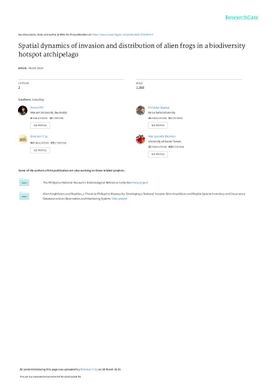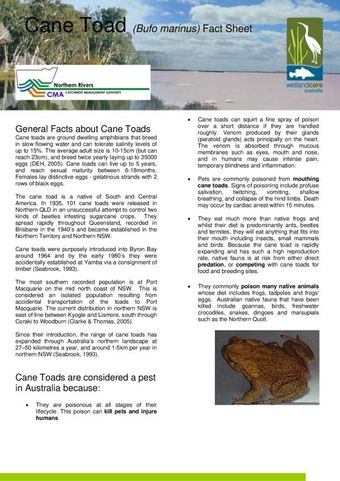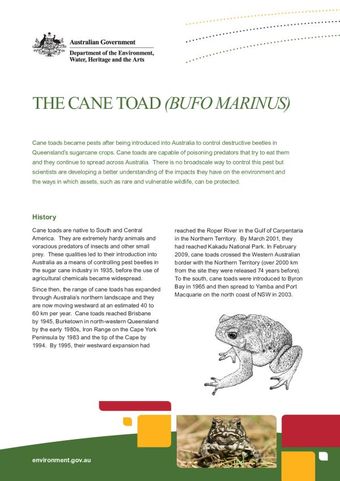Spatial dynamics of invasion and distribution of alien frogs in a biodiversity hotspot archipelago
- Description:
- The endemic-rich amphibian fauna of the Philippine Archipelago (ca. 350,000 km2) includes six alien frogs: the American bullfrog (Lithobates catesbeianus), Asiatic painted toad (Kaloula pulchra), cane toad (Rhinella marina), Chinese bullfrog (Hoplobatrachus rugulosus), green paddy frog (Hylarana erythraea), and greenhouse frog (Eleutherodactylus planirostris). The chronological history of their invasion across the Philippines was reconstructed based on historical and geographic data. Subsequently, we estimated their current and potential distribution through species distribution modelling and Gaussian kernel density smoothing species distribution data. Seven known and potential pathways of introduction into and spread throughout the Philippines were identifi ed, namely, intentional introduction as a (1) biocontrol agent and (2) food source; contamination of (3) agriculture trade, (4) aquaculture trade, and (5) ornamental plant trade; (6) stowaway of cargo; and (7) through the exotic pet trade. Spatio-temporal patterns of distribution showed a stratifi ed diff usion process of spread wherein human-mediated jum dispersal is the primary mode followed by diff usion dispersal. The status of the American bullfrog in the Philippines is unresolved, whether it has successfully established. Meanwhile, the other five alien frogs have established populations in the wild, typically the dominant species in both artificial and disturbed habitats, and are continuously spreading throughout the Philippines. Estimates of current and potential distribution indicate that none of the alien frogs has realised its full potential distribution and that the cane toad is the most widespread, occurring in almost all major islands of the Philippines (ca. 85%), while the greenhouse frog is the least distributed, being found so far in eight provinces and on seven islands. In light of these findings, we provide policy and management recommendations for responding to current and future alien frog invasions.
- Display date:
- 2019
- Collections:
- Secretariat of the Pacific Regional Environment Programme (SPREP)
- Publisher:
- International Union for Nature Conservation (IUCN)
- Content partner:
- Secretariat of the Pacific Regional Environment Programme (SPREP)
- Availability:
- Not specified
-
Copyright status: All rights reservedFind out more about what you are able to do with this itemThis item is all rights reserved, with means you'll have to get permission from Secretariat of the Pacific Regional Environment Programme (SPREP) before using it. For more information, please see our use and reuse page.What can I do with this item?Non-infringing useNZ copyright law does not prevent every use of a copyright work, and this item may be hosted by an international institute or organisation. You should consider what you can and cannot do with a copyright work.No sharingYou may not copy and/or share this item with others without further permission. This includes posting it on your blog, using it in a presentation, or any other public use.No modifyingYou are not allowed to adapt or remix this item into any other works.No commercial useYou may not use this item commercially.
Related items
Welcome and warm Pasifik greetings
The information on this site has been gathered from our content partners.
The names, terms, and labels that we present on the site may contain images or voices of deceased persons and may also reflect the bias, norms, and perspective of the period of time in which they were created. We accept that these may not be appropriate today.
If you have any concerns or questions about an item, please contact us.



